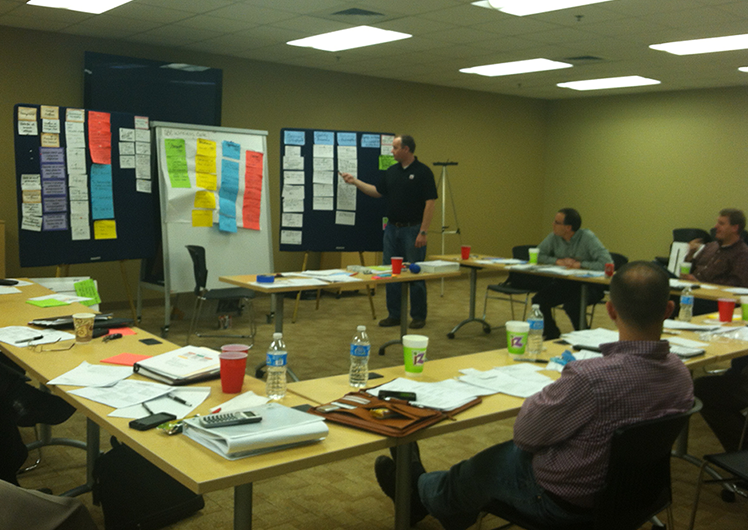Unforgivable Power?
The Center for Creative Leadership studied 21 derailed executives, who were expected to go higher in the organization, but had reached a plateau in their careers and were fired or forced to retire early. They were compared with 20 managers who made it all the way to the top. The researchers found the two groups astonishingly alike.
Every one of the 41 executives possessed remarkable strengths, and everyone was flawed by one or more significant weaknesses. So a person can make a lot of mistakes and have certain weaknesses and still rise to success. But a close study of the derailed executives showed there was one fatal flaw, when committed, always led to their downfall. The CCL researchers called it “the unforgivable sin “.
Immoral or unethical behavior is not what the researchers meant. We have all observed upstanding employees grieve over the loss of their leader who was a proven crook. The CCL fatal sin is sweepingly subtle. You may have seen this flaw when a management team agrees on a direction and the next thing everyone knows the team leader has headed off on a totally different track. Or a manager assigns someone a project and then secretly starts doing portions of the project himself. Or there is a certain employee who seems to have a special power to switch the leader’s thinking and often does so. At first these antics are the office joke. Now no one is laughing.
A child might describe this “unforgiveable sin” as being sneaky. In consultant speak; it would be called betraying a trust due to being consistently unpredictable. Specifically, this fatal flaw is a blatant disregard for the unwritten promised we depend on from teammates, but especially of our leaders, which are, ” I will do exactly what I say I will do when I say I will do that. If I change my mind I will tell you well in advance so you will not be harmed by my actions.”
Of course there are occasional exceptions. All of us will slip up and miss a promise, and there are desperate situations when a unilateral decision must be made. But if this unprofessional behavior begins to be known as the leader’s “management style”, their team members will get the message that the team’s input is redundant and will act accordingly.
Journal Entry: People who report to a manager with this flaw generally take one of three actions: 1) Quit – seldom a wise idea since this manager will, given time, either self-destruct or change 2) Stay stuck in the drama – complain, whine and pull the people around them down and off mission or 3) Stop trying to fix this person – decide to forgive the unforgivable behavior, focus on an inspiring goal and make a plan. Note: The folks who add a prayer for wisdom to action #3 often experience an added benefit of more peace and power in their leadership and life.
It is mutual trust, even more than mutual interest that holds human associations together. -H.L. Mencken
Better to trust the man who is frequently in error than the one who is never in doubt. -Eric Sevareid
If a man’s associates find him guilty of being phony, if they find that he lacks forthright integrity, he will fail. His teachings and actions must square with each other. The first great need, therefore, is integrity and high purpose. – Dwight D. Eisenhower
Few things help an individual more than to place responsibility upon him, and to let him know that you trust him. – Booker T. Washington
When a gifted team dedicates itself to unselfish trust and combines instinct with boldness and effort, it is ready to climb. – Patanjali, Ancient Yoga Master
A leader without any followers is a real bummer.” M. A.Tate




Retention – Who Will Go First?
Family Matters
A mid -size family business, run by a father and his two sons, was having trouble retaining their part-time employees. We met for a compression planning session to get a solution to this problem. As we began the session, a few questions came to mind. “What’s an example of a company that’s world-class at retaining part -time employees?” I asked.
They thought together for a bit and agreed that “Chik-fil-A” was a good example of a company great at employee retention. “Why do you think “Chik-fil-A” is so effective?” The two sons started rattling off reasons, “good pay, great benefits, flexible schedules–” Their father added, “They really care for their employees…in fact I think you could say that they love them.” Everyone nodded in agreement. The practical positives of pay, benefits, and scheduling were helpful, even essential in some cases…but not central.
I pinned a index card on my storyboard, labeled “Ways to show our employees that we care for them” , and asked for their ideas. They generated 10 ideas in just a few minutes. Then they selected their top three actionable ideas, balancing cost and importance, and created a plan around each of them. The family team was fired up and ready to roll out these simple strategies. “There is one step you need to take before you’ll get the results you want from your staff, ” I said. They listened eagerly. “For the next 90 days, you need to practice applying these three principles to each other.” They stared at me, then back at one another.
Too Many Keys
What is the key to retaining employees? Hundreds of surveys and books have attempted to answer this costly problem. In the end everyone winds up with the same top five or six keys: challenging work, appreciation from the boss, more money, life-work balance, healthy peer relationships and purposeful career paths. That seems like a fragile list of interdependent items as it is, but to complicate matters even more, is one more important than another? And for which generation? Gen X, Gen Y, Baby Boomers, etc? Sounds like a prime opportunity for a consultant to develop a retention matrix and solve this thing.
Relax, I don’t have a matrix, but I do have one more story. Between these two stories, it’s possible that we’ll find a central key to employee retention that spans all generations and methodology fads.
Turning Things Around
A few years ago I recognized a key retention principle. I was working with a newly hired commercial real estate executive. We’ll call the executive “Joe”. Joe was recruited from a competitor and was assigned to turn around a failing division. This division was entrenched in a classic “culture of fear” as described in Tom Demarco’s book, Slack – Getting Past Burnout, Busywork And the Myth of Total Efficiency:
Characteristics of a Culture of Fear
Motivation by fear never works in the long run, and it had been a very long run in a culture of fear for this struggling team that Joe had inherited. However, in just 9 months Joe orchestrated a 180-degree turn-around. The department improved to the point of having the lowest turnover and highest internal customer satisfaction rating in the company! This change endured. Two years later this division was listed as a key strength on the company’s strategic plan (instead of a glaring weakness) and still maintains one of the highest employee retention rates in the industry.
Vision and Appreciation
How did this happen? Little did Joe’s team members know that when he took over the department, his professional career and personal spirit was in the proverbial ditch, right alongside theirs. He had just resigned from a “Culture of Fear” organization himself. So, before he threw himself into creating innovative plans to fix his new team, he chose first to yield himself to healing and change. He renewed his life and career plan, which effectively restored his personal and professional vision. In the process, he grasped a guiding principle that served to support his leadership success in retaining and growing people forever: “it’s much easier to lead people up a new road if you have walked that road as well.”
To evaluate his progress, Joe requested some formal feedback from his all employees. He received a lengthy report from HR. As he began to go through the many pages of his report, he noted high marks on the objective scoring portion. He was pleased. Then he turned to the “Additional Comments” section. There it was. His unrealized strategy for retention in nine simple words: “Joe, thank you for giving us our lives back.”
Joe was humbled, overwhelmed and realized all the more clearly that his sincere care and visionary leadership (fueled by personal insight) had enabled this departmental change, and inspired those heartfelt words. The family business team of the first story had a similar opportunity to embrace these relational principles, as do you and I. It may be worth a try.
Working Journal Entry: Love or Fear – which will you choose to help you hold on to the people you value in your leadership and your life? Who will go first?